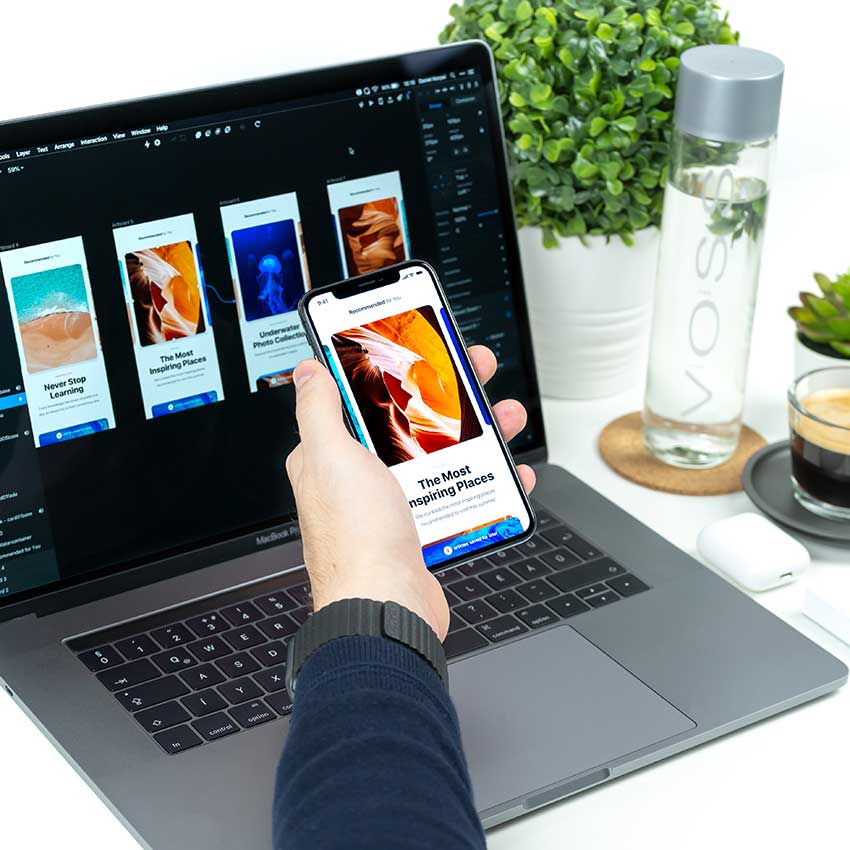Show:
Latest Mobile App Development Trends in 2022
The success of the mobile app development firm is defined by two cornerstones as a result of this story. There are two factors to keep in mind are:
- Time: arrive on stage on time, and you’ll have a better chance of capturing the attention of potential customers (which Microsoft failed to do).
- Trends: provide ideas that clients haven’t even considered and let them shift to the most recent app trends. Offer a unique perspective, become the next trendsetter, and you’ll be invited to join the fight for ideas.

By offering a unique perspective, become the next trendsetter, and you’ll be invited to join the battle of leaders, where you’ll eventually win (just like Microsoft didn’t). You just need App Development Company like Vrinsoft that helps you to build trending features for your business app.
This article discusses the most effective strategies for propelling your company to the target market position. It showcases the most promising mobile development trends.
Mobile App Development Trends list
Flutter:
Native and cross-platform mobile app development are hotly debated topics. For a native approach, should you choose Java/Kotlin, Swift/Objective C, or React Native for cross-browser compatibility? Or might Ionic be a better fit? What about Cordova, for example? This has gotten a lot of attention from software engineers! The top features of Flutter:
- Open Source
- Free
- Built on the basis of easy to learn the language
Flutter, one of the most intriguing mobile app trends for 2022, alters the game’s rules. Its stable version was published at the end of October 2018, and it quickly became one of GitHub’s most popular software repositories.
The main advantages that can give to application development trends are as follows:
- The accelerated app development process
- Improved collaboration
- Minimized time-to-market
All of the information mentioned above will help your brand-new mobile app greatly. Application development trends will be useful in any market you want to break into. Flutter is presently the only framework that can quickly offer you all of the required capabilities, make the development process as painless as possible, and quickly deliver an MVP to attract funding and start growing your business.

Digital Well Being:
The most powerful firms in the mobile business are focusing their efforts on assisting users in establishing boundaries between digital and real-time, focusing on specific tasks rather than being distracted by apps, and achieving well-being goals in order to better their lives in general.
We’ve all had the experience of using Facebook app to see if a friend’s birthday is coming up and then end up spending hours reading through your news feed with no clear purpose. Mobile apps are voracious time eaters, and people spend a lot of time on their phones. At first glance, it appears to be a benefit to your company; nevertheless, we’ve recently discovered a trend in the opposite direction.
It all began with the Google Pixel users: They were the first to experiment with a useful feature for tracking digital behaviors. Digital Wellbeing integrations were later included to all other Android Q OS smartphones.
Team Apple has also had the opportunity to observe digital habits. Screentime Dashboard, App Limits, Downtime, and other features are available in iOS 12.
Follow app trends and add features like screen time tracking, concentrate mode, and customizable notifications to your app. Digital well-being features are currently only available on the most recent Android and iOS versions. As a result, you may level up your app by allowing users with older OS versions to try out a new experience and better manage their digital time:
- Allow users to track the amount of time they spend on your social media app and turn on multiple notification schedules.
- Allow users to turn off notifications on messengers so they may focus on important work.
- Send users notifications on how much time they spend playing a game and enforce restrictions.
Motion Control Technologies:
Since the introduction of dismissible buttons, mobile usage and user experience have altered dramatically. Hand movements on the touch screen (such as a tap, double-tap, push, pinch, rotate, etc.) as well as shaking and tilting are already common interactions between a smartphone and its user. As new application patterns arise, there will soon be no need to touch the screen.
Innovative gesture control techniques are being developed these days to make smartphone usage even more intuitive and convenient. This is something to consider if you want to create a new groundbreaking app.
The radar-based motion control technology is used in modern smart devices. For example, with the Galaxy Note 10, you may control the device’s camera, among other things.

Companies all around the world are launching new motion gesture recognition engines and platforms, incorporating the ideas into their apps and appealing to clients in this manner. These characteristics are related to application development trends.
Adding buttons to your app’s user interface won’t suffice in 2022; you’ll need to augment your app with a touchless experience. This technology could help you become a market leader no matter what app you want to create. Allow users to execute a variety of tasks by just waving or snapping their fingers in front of the screen:
- On social media apps, scrolling through the news feed or sending friend requests;
- Using photo editing applications to experiment with different filters; using eReaders to turn pages;
- Skipping to the next song or adjusting the volume on music player apps, etc.
Face Recognition:
The iPhone X introduced a slew of new features, the most notable of which was Face ID. Apple has advanced beyond previous technologies, analyzing the human face 3D model with its shapes and emotions. Face Authentication is now available in beta for Android, following Apple’s lead. Microsoft is also working on similar technology. They are attempting to develop and train a camera that can distinguish between a real person attempting to use Face ID and an image in front of a camera. Face ID experienced some issues in China, but it is still a trend that many businesses are attempting to embrace. Here’s why this is a real trend:
- Security
- Payments
- Speed and convenience
Face recognition in your app is one of the app trends as well as a terrific approach to reach out to the most active mobile consumers, as Generation Z prefers and trusts biometric technology. Depending on the nature of your business, you can use facial recognition algorithms to:
- Allow users to log into an app (such as a mobile social network, a task management app, a photo editor, or a messenger);
- Check out and confirm your identity (e-commerce apps, online marketplaces, automobile or real estate rental apps, banking apps, and so on);
- Switch to special do-not-interrupt modes (social networks, messengers, etc);
- As well as a variety of other responsibilities.

 Return to Previous Page
Return to Previous Page








